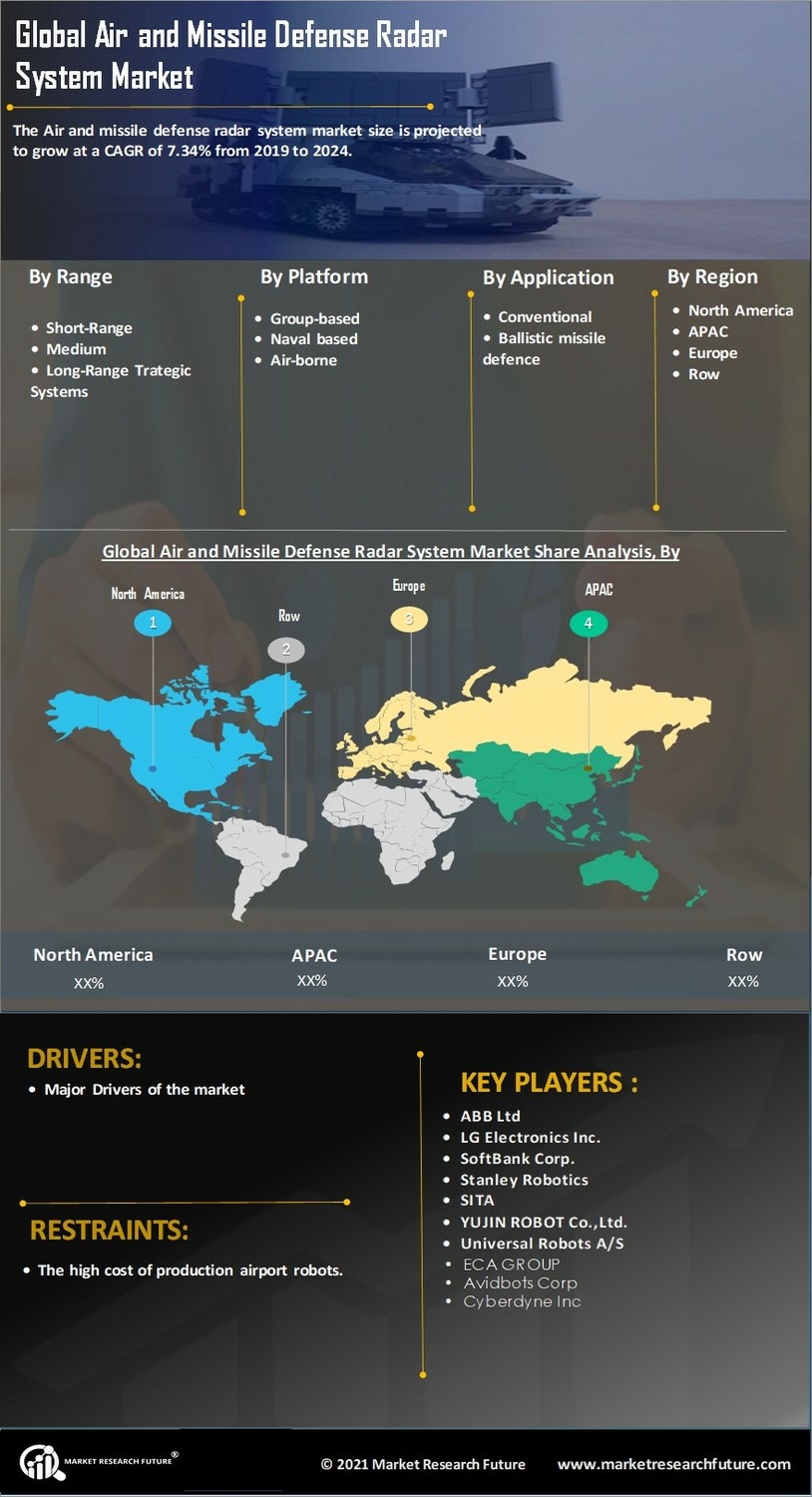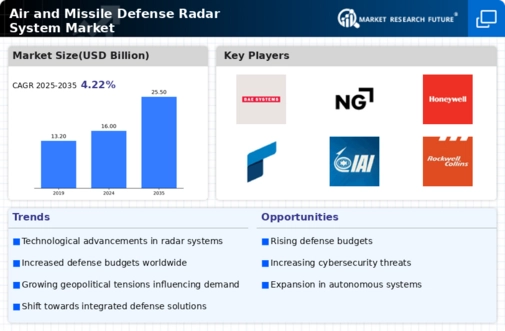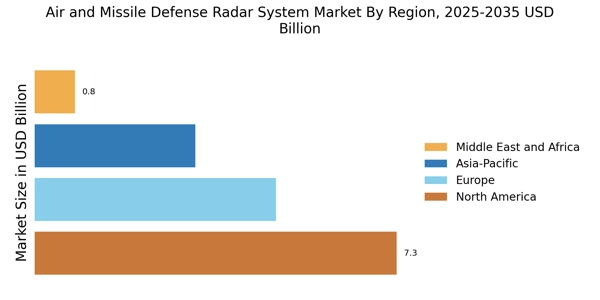Increasing Geopolitical Tensions
The Air and Missile Defense Radar System Market is heavily influenced by rising geopolitical tensions across various regions. Nations are increasingly investing in advanced defense systems to counter perceived threats, leading to a heightened demand for sophisticated radar systems. For instance, countries in Eastern Europe and the Asia-Pacific region are enhancing their defense capabilities in response to regional conflicts and military posturing. This trend is reflected in defense budgets, which have seen increases, with some nations allocating over 10% of their military spending to air and missile defense systems. Such investments are likely to sustain market growth as nations prioritize national security.
Emerging Threats from Asymmetric Warfare
The Air and Missile Defense Radar System Market is adapting to the evolving landscape of asymmetric warfare, where non-state actors and unconventional tactics pose new challenges. The proliferation of drones and cruise missiles has necessitated the development of advanced radar systems capable of detecting and neutralizing these threats. As a result, defense contractors are focusing on creating systems that can operate effectively in complex environments. The market is expected to expand as military organizations seek to enhance their situational awareness and response capabilities against these emerging threats, potentially leading to a market growth rate of around 6% over the next five years.
Technological Advancements in Radar Systems
The Air and Missile Defense Radar System Market is experiencing a surge in technological advancements, particularly in radar technology. Innovations such as phased array radar and digital signal processing are enhancing detection capabilities and response times. These advancements are crucial as they allow for the identification of multiple targets simultaneously, which is increasingly necessary in modern warfare scenarios. The market is projected to grow significantly, with estimates suggesting a compound annual growth rate of over 5% in the coming years. This growth is driven by the need for more sophisticated systems that can integrate with existing defense infrastructures, thereby improving overall operational effectiveness.
Investment in Defense Modernization Programs
The Air and Missile Defense Radar System Market is benefiting from substantial investments in defense modernization programs. Many countries are recognizing the need to upgrade their aging defense systems to meet contemporary threats. This modernization often includes the integration of advanced radar technologies that improve detection and tracking capabilities. Reports indicate that defense spending on modernization initiatives is projected to reach unprecedented levels, with some nations earmarking billions for new radar systems. This trend is likely to drive market growth as governments prioritize the enhancement of their air and missile defense capabilities to ensure national security.
Collaborative Defense Initiatives and Partnerships
The Air and Missile Defense Radar System Market is witnessing a rise in collaborative defense initiatives and partnerships among nations. These collaborations often focus on joint development and procurement of advanced radar systems, which can lead to cost efficiencies and enhanced capabilities. For example, multinational defense projects are becoming more common, allowing countries to share resources and expertise. Such partnerships not only foster innovation but also create a more integrated defense posture against common threats. As nations continue to collaborate, the market is expected to see increased activity, potentially leading to a growth rate of around 4% in the next few years.


















Leave a Comment